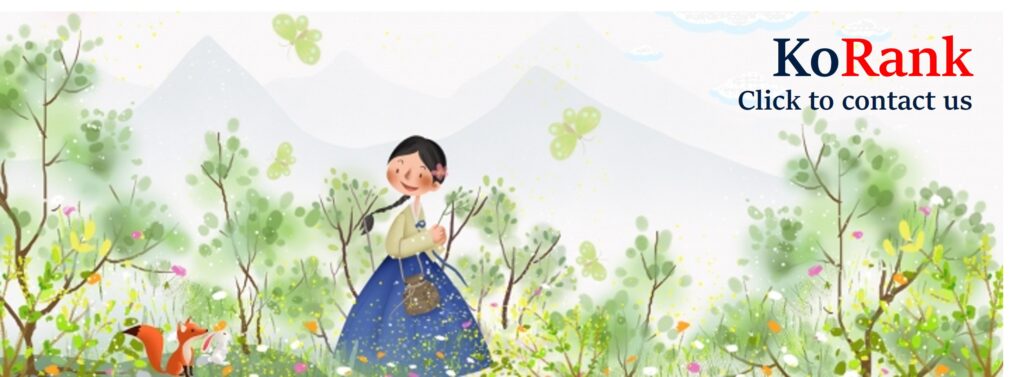Korean Social Media : A 2025 Guide for Global Marketers
As South Korea remains one of the world’s most digitally connected societies, understanding the Korean social media ecosystem is essential for any brand seeking real traction in this unique market. With platform preferences and user behavior that differ significantly from the West, simply repurposing global content won’t cut it.
In this post, we’ll break down the major Korean social media platforms, how users engage with them, and actionable tips for global marketers aiming to build brand presence in Korea.
Overview of Korean Social Media in 2025
South Korea has one of the highest smartphone penetration rates globally and is home to a fast-moving, mobile-first audience. As of 2025:
- Over 92% of adults actively use at least two social platforms daily.
- Short-form video continues to surge, but text-based communities also remain popular.
- Younger audiences (18–29) dominate platforms like Instagram, YouTube, and TikTok, while KakaoTalk and Naver services are ubiquitous across all ages.
For marketers, this means channel choice must be highly tailored to audience segment and campaign goals.
Top Korean Social Media Platforms You Must Know
More Than Just Messaging
KakaoTalk isn’t just Korea’s most-used messaging app—it’s a powerful marketing channel with business tools like Kakao Channel, rich push notifications, in-chat coupons, and branded content feeds. Most Koreans open KakaoTalk multiple times an hour, making it ideal for CRM, brand updates, and retargeting.
Still the Trend Leader
Instagram remains a dominant platform among millennials and Gen Z. Korean users are visually driven, trend-sensitive, and responsive to aesthetic, curated content. Influencer marketing thrives here—local micro-influencers often outperform big names in engagement rates.
Korea’s #1 for Entertainment and Education
With its blend of entertainment, how-to content, and product reviews, YouTube is the go-to platform for all age groups. Branded channels, sponsored creator content, and even product unboxings in Korean drive consumer action. Long-form content still holds power here.
Community-Driven Marketing
Naver, Korea’s dominant search engine, hosts community platforms like Café and Band, which serve as niche forums and interest-based groups. These are ideal for B2C targeting, especially in beauty, parenting, pets, and hobby categories.
Short-Form Boom in Korea
Short-form video exploded post-2023, with TikTok and YouTube Shorts now commanding serious attention. Korean creators lean into trending sounds, humor, and stylized editing—global brands must localize heavily to blend in and stand out.
How Korean Social Media Differs from the West
Closed ecosystems: Many platforms (Kakao, Naver) aren’t fully integrated with Meta or Google tools. Marketers must adapt to platform-specific ad systems.
Comment culture: Korean users are highly vocal, and comment sentiment can quickly shape brand perception.
Speed of trend turnover: Micro-trends shift rapidly; reacting within days is often necessary.
Understanding these dynamics is critical for local success.
Korean Influencer Marketing: What Works in 2025
Influencer tiers in Korea differ slightly :
- Nano/Local Creators (under 10k followers) often offer stronger ROI due to niche loyalty.
Trust and tone are more important than follower count.
YouTube creators (especially in tech, beauty, and food) lead purchase intent.
Collaborations must feel organic, visually polished, and respectful of Korean culture to avoid backlash.
Tips for Running Successful Social Campaigns in Korea
Use Korean language—even if it’s just subtitles or hashtags.
Leverage Kakao Channel for CRM-based engagement.
Test platform-specific content rather than cross-posting.
Use localized hashtags (e.g., #일상브이로그, #먹방, #OOTD코디).
Monitor communities (Café, Band) for feedback, not just likes.
Final Thoughts
Korean social media is not just an extension of global platforms—it’s a distinct ecosystem shaped by local culture, communication styles, and digital habits. For global marketers, success in Korea doesn’t come from copy-pasting global campaigns but from deeply understanding how Koreans connect, consume, and engage online.
Whether it’s building a Kakao Channel, collaborating with YouTube creators, or joining niche communities on Naver Café, your approach needs to be tailored and culturally aware. Language, platform norms, and even aesthetic preferences play a major role in how your brand is received.
Ultimately, tapping into Korean social media the right way means earning both attention and trust. And in a market where loyalty spreads as fast as trends, that trust is your most valuable asset. Take the time to localize—not just translate—and you’ll build campaigns that truly resonate.
Stay Ahead in Korea’s Market!
Subscribe to our newsletter for exclusive market insights, industry rankings, and the latest trends—delivered straight to your inbox. Don’t miss out on key opportunities! 








